Occupational Safety Training for Operating Plastic Injection Molding Machines
99,000 ₫
Note: The above price is calculated for one person and may fluctuate depending on the number of participants in the course and market conditions. For more accurate pricing support, please refer to the price list or contact our consulting staff directly.
Occupational safety is an important issue when operating the Plastic Press Machine and needs to be addressed promptly to ensure the health and safety of workers and to enhance the reputation of businesses here. The Occupational Safety Training course is one of the effective solutions to raise awareness of how to prevent workplace accidents for workers operating the Plastic Press Machine.
Table of Contents
Toggle1. Overview of Plastic Injection Machines
a. What is a plastic injection machine?
A plastic injection machine, also known as a plastic injection molding machine, is an industrial machine used to produce plastic products by injecting molten plastic into molds to form shapes. This process typically includes steps such as feeding plastic material into the machine, heating and melting the plastic, and then injecting it into a mold to create the final product.
Plastic injection machines are widely used in mass production, ranging from household items to automotive parts, toys, and many other applications. This allows the production of diverse plastic products at low manufacturing costs and high quality.

b. How plastic injection machines work
The operation principle of a plastic injection machine mainly relies on the process of injecting molten plastic into molds to produce final products. Here is an overview of the operation process:
- Preparing plastic materials: The raw material is usually plastic pellets of a specific size. These pellets are fed into the machine and converted into a molten state by heating.
- Plastic injection: The molten plastic is then injected into the mold through a barrel and nozzle. High pressure is applied to push the plastic through the injection nozzle.
- Cooling and molding: Once the plastic is injected into the mold, rapid cooling begins. The mold is shaped according to the desired product, and when the plastic cools, it retains the product shape.
- Demolding: When the product has sufficiently cooled, the mold is opened, and the product is removed. In some cases, vibration may be applied to the mold to ensure product release and quality.
- Repetition: The process is repeated to produce multiple identical plastic products.

c. Industries using plastic injection machines
Plastic injection machines are widely used across various industries. Some main industries include:
- Household goods manufacturing: Used to produce items such as pipes, bottles, sockets, kitchen utensils, and many other products.
- Automotive industry: Produces plastic parts for vehicles, including dashboards, trims, and other components.
- Medical industry: Produces items such as syringes, medical device components, and other medical supplies.
- Toy industry: Plays a key role in producing safe and diverse plastic toys for children.
- Electronics industry: Used to produce outer casings for electronic devices like mobile phones, tablets, and household electronics.
- Packaging industry: Produces items like plastic bags, bottles, and other packaging products.
2. Overview of Occupational Safety Training for Operating Plastic Injection Machines
a. What is occupational safety training?
- Occupational safety training for operating plastic injection machines consists of courses designed to raise awareness of accident prevention for workers. Workers directly operating plastic injection machines belong to Group 3.
- The training helps workers recognize and avoid hazards, reducing the risk of workplace accidents.
REGISTER FOR OCCUPATIONAL SAFETY TRAINING
b. Training duration
Initial safety training duration:
- Total training time is at least 24 hours, including examination time.
- 8 hours of theory on occupational safety policies and laws
- 8 hours of basic occupational safety and hygiene knowledge
- 4 hours of specialized training theory
- 2 hours of practical training in specialized topics
- 2 hours for the final theoretical examination
The training center will divide the schedule into multiple sessions depending on workers’ availability. Usually, there are 6 sessions over 3 days, assuming continuous scheduling is possible.
Periodic safety training duration:
- Before the occupational safety card expires, workers seeking reissuance must attend periodic safety training, with duration of at least 50% of the initial training time.
Explanation: The total periodic safety training time is at least 12 hours, including exams. After completing the training and passing the test, workers will have their occupational safety card reissued and extended.
c. Training content
| No. | TRAINING CONTENT | TRAINING TIME (HOURS) | |||
| Total | Including | ||||
| Theory | Practice | Exam | |||
| I | Occupational safety policies and legislation | 8 | 8 | 0 | 0 |
| 1 | Overview of safety and hygiene legal regulations. | 6 | 6 | ||
| 2 | System of standards and technical safety regulations. | 1 | 1 | ||
| 3 | Specific regulations by state management agencies on occupational safety for construction, production facilities, equipment, and hazardous materials. | 1 | 1 | ||
| II | Basic occupational safety knowledge | 8 | 8 | 0 | 0 |
| 1 | Basic knowledge of workplace hazards. | 4 | 4 | ||
| 2 | Methods to improve working conditions. | 1 | 1 | ||
| 3 | Safety culture in production and business. | 1 | 1 | ||
| 4 | Rights and duties of employers and employees; safety policies; role of safety officers. | 1 | 1 | ||
| 5 | Safety regulations, signs, instructions, using safety equipment, first aid skills, and occupational disease prevention. | 1 | 1 | ||
| III | Specialized training content | 6 | 4 | 2 | 0 |
| Comprehensive knowledge of machines, hazardous substances, risk assessment, and safe work procedures with equipment and hazardous materials. | 6 | 4 | 2 | ||
| IV | Final safety training exam | 2 | 2 | 0 | 0 |
| Total | 24 | 22 | 2 | ||
See more training content of the 6 groups
d. Occupational safety card
After completing the training and passing the exam, workers will be issued an occupational safety card (commonly called Group 3 safety certificate).
The Group 3 safety card includes information such as name, date of birth, job and work environment, training duration, red seal, and signature confirming completion.
According to Clause 2 of Article 24 of Decree 44/2016/ND-CP, there are 2 cases:
- If the employer and employee have a labor contract, the employer must sign, stamp, and endorse the safety card after the worker completes training and passes the exam.
- If the worker is freelance or temporary without a labor contract, the training unit must sign, stamp, and endorse the safety card after completion and passing the exam.

3. Hazards When Operating Plastic Injection Machines
Operating plastic injection machines can involve several hazards. Below are some aspects that machine operators need to pay attention to in order to ensure safety:
- High Temperature: Since plastic injection machines usually work with molten plastic, the temperature can be very high. Operators must follow safety measures such as wearing personal protective equipment, including safety glasses and heat-resistant clothing.
- High Pressure: The plastic injection process often requires high pressure to push the plastic into molds. Working with high pressure can be dangerous, and operators need to be trained to handle this safely.
- Risk of Plastic Spills: Molten plastic can flow or spill from the mold, creating burn hazards. Safety measures such as protective screens and safe working rules are required to avoid this situation.
- Handling and Transporting Plastic Materials: Plastic materials are often in pellet form, which can be hazardous if not transported and handled properly. Caution must be exercised when handling plastic materials to avoid accidents and contamination.
- Equipment Maintenance: Machines need regular maintenance to ensure safe and effective operation. Improper maintenance of plastic injection machines can lead to technical problems that are hazardous to operators.
- Electrical Risks: Plastic injection machines often use high electrical power. Electrical safety is essential to prevent electric accidents.
To minimize hazards, machine operators must receive comprehensive safety training and follow the specific safety rules for each type of plastic injection machine.

4. Measures to Control Workplace Accidents When Operating Plastic Injection Machines
To control workplace accidents when operating plastic injection machines, the following safety measures can be implemented:
- Training and Guidance:
- Provide comprehensive safety training for plastic injection machine operators.
- Provide guidance on specific safety rules and conduct periodic knowledge assessments.
- Personal Protective Equipment (PPE):
- Ensure that all employees wear proper PPE, including safety glasses, helmets, heat-resistant clothing, and safety gloves.
- Periodic Inspection and Maintenance:
- Perform regular inspections and maintenance on plastic injection machines to ensure all components function properly.
- Immediately replace damaged parts and do not operate the machine if any issues are detected.
- Protective Screens and Spill Prevention Systems:
- Use protective screens to prevent molten plastic from spilling and reduce burn risks.
- Install spill prevention systems to stop plastic from overflowing from molds.
- Safe Working Rules:
- Follow safe working rules, including not opening molds while the machine is operating and not performing maintenance while the machine is running.
- Pressure Control:
- Control system pressure to reduce the risk of accidents caused by high pressure.
- Plastic Material Management:
- Ensure the safe transport and handling of plastic materials to prevent accidents and contamination.
- Electrical System Checks:
- Conduct periodic electrical safety checks and ensure all electrical equipment is properly maintained.
- Emergency Evacuation Plan:
- Develop an emergency evacuation plan and train employees on how to respond to emergencies.
- Accident Recording and Evaluation:
- Record all accidents, incidents, and near misses, then evaluate them to improve processes and occupational safety.
5. Benefits of Occupational Safety Training
An Toàn Nam Việt provides businesses with the following benefits after completing occupational safety training courses in accordance with Decree 44/2016/ND-CP regarding occupational safety and hygiene for companies, factories, and enterprises:
- Employees can recognize potential workplace hazards and take preventive measures to avoid accidents.
- Businesses can establish risk prevention measures in production, operation, and maintenance processes.
- Reduce costs associated with workplace safety incidents.
- Continuous production improves labor productivity and product quality.
- Compliance with labor safety laws reduces legal risks.
- Enhances reputation and professionalism, thereby elevating the company’s brand.
Nam Việt’s training courses are a solution to prevent external hazards from affecting individuals, helping them avoid dangers that could lead to injury or even death.
REGISTER FOR OCCUPATIONAL SAFETY TRAINING SERVICE
6. Customer Feedback After Completing Training Courses
An Toàn Nam Việt has many years of experience in supporting numerous businesses across Vietnam in general and in the southern provinces in particular. This responsibility is extremely valuable to Nam Việt, which is why our Occupational Safety Training programs are increasingly professional. The motivation for An Toàn Nam Việt’s growth comes from the positive feedback and suggestions from our business partners. Below are some testimonials from our valued clients.
Bac Nam E&C Investment & Construction Joint Stock Company
“The first time we used An Toàn Nam Việt’s services, I was impressed by the 24/7 support from the consulting team. Organizing the training class was fast and convenient for our company. Thank you very much for Nam Việt’s service!”
Hoa Dat Construction & Trading Joint Stock Company
“Nam Việt’s service has greatly helped us simplify occupational safety and complete safety documentation for our work process. The consulting team responded promptly to our inquiries. Five stars for Nam Việt!”
See more customer interviews after using An Toàn Nam Việt services
7. An Toàn Nam Việt’s Occupational Safety Training Capacity
An Toàn Nam Việt is a reputable and high-quality occupational safety training center in Vietnam. Training sessions are conducted continuously at production workshops, factories, or construction sites nationwide (all 63 provinces of Vietnam).
REGISTER FOR OCCUPATIONAL SAFETY TRAINING SERVICE
Occupational Safety Training License
- An Toàn Nam Việt has been inspected and certified by the Department of Safety under the Ministry of Labor – Invalids and Social Affairs for meeting the requirements to conduct occupational safety and hygiene training. This further strengthens our capacity to provide occupational safety training.

Materials and Lectures
- Before being used in OST courses, all training materials are reviewed and approved to ensure accurate knowledge and effective application.
- Teaching methods are standardized according to An Toàn Nam Việt standards, developed by occupational safety training experts to ensure maximum knowledge absorption by trainees.
Facilities
- Controlling classroom conditions improves teaching efficiency and knowledge retention.
- Our training facilities include spacious classrooms meeting standards for area, lighting, and training equipment, etc.
8. Nationwide Reputable Occupational Safety Training Center
At An Toàn Nam Việt, we prioritize occupational safety training as our top professional commitment. Teaching workers how to protect themselves contributes to building a safer workforce and, ultimately, the nation.
To ensure effective training, we meticulously prepare every detail, from tools and equipment to curricula, materials, audio, and lighting.
Our occupational safety instructors are experts with many years of experience, including research on identifying hazards across all industries and methods to prevent them.
Lectures are practical, engaging, and easy to understand, ensuring employees are comfortable and absorb knowledge effectively. All content strictly follows Decree 44/2016/ND-CP.
Employees learn preventive measures and self-protection techniques, applying them appropriately in real work situations.
Our training center proudly provides professional and reliable occupational safety training with the following advantages:
- Competitive training costs while maintaining high quality.
- Flexible training schedules to accommodate company operations.
- Fast and compliant certification procedures.
- Experienced and long-serving instructors.
- Controlled classrooms that enhance teaching efficiency and trainee learning.
- Lessons tailored to occupational safety requirements in enterprises.
- An Toàn Nam Việt provides dedicated, professional support quickly and accurately.

9. Additional Occupational Safety Training Materials
1 review for Occupational Safety Training for Operating Plastic Injection Molding Machines
No comments yet

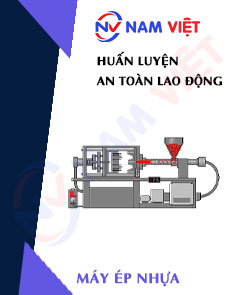
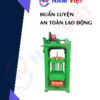
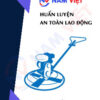




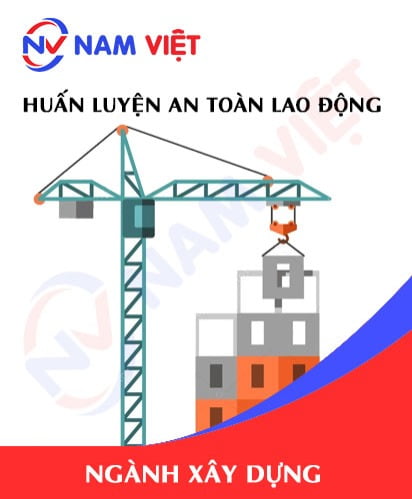
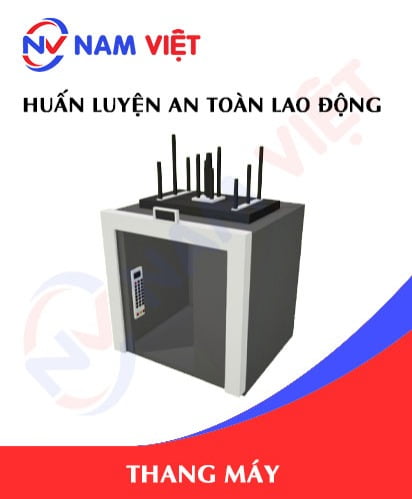
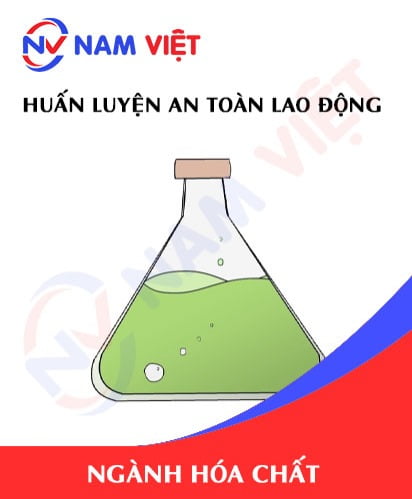

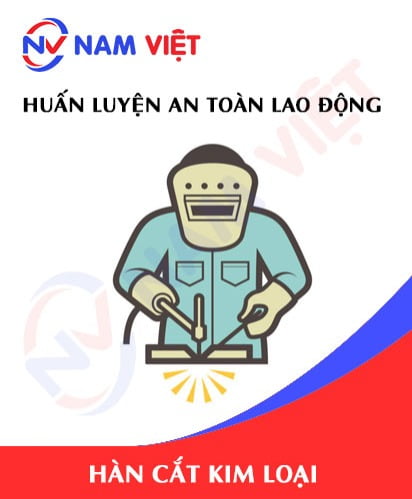


phanminhhang341
Hài lòng với cách tổ chức lớp học